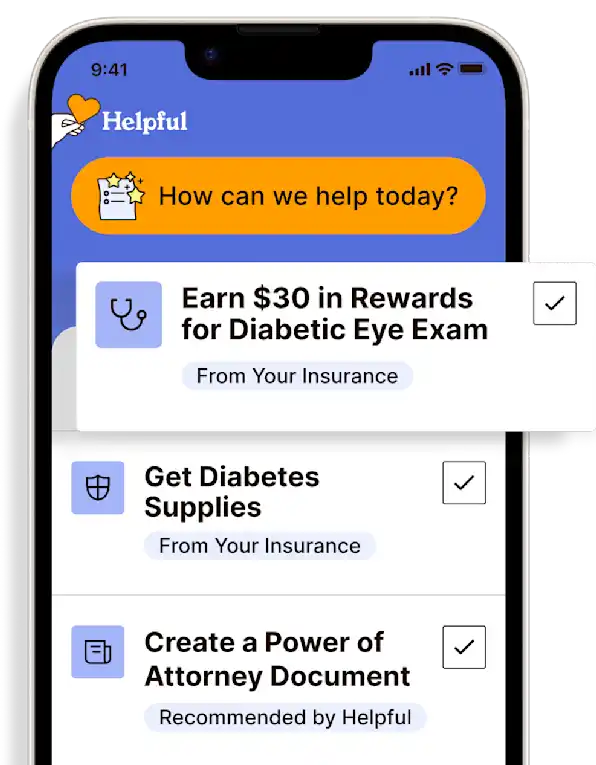Smoking is the Leading Cause of COPD
Smoking accounts for 8 out of 10 COPD-related deaths, and 75% of all COPD cases occur in people with a history of smoking.
Get insurance benefits, legal documents, and medical records in one place

Helpful Highlights
To prevent COPD, stop smoking.
There are other risk factors for COPD, though smoking is the leading factor.
COPD can also occur in people who have never smoked.
COPD is not curable, and it is a progressive disease that will get worse over time.
What can my loved one do?
STOP SMOKING
Avoid secondhand smoke
Stay up-to-date with vaccinations (flu, pneumonia, COVID-19)
Use appropriate protective equipment if exposed to air pollutants
Get regular check-ups
What can I do to help my loved one?
Help them to quit smoking
Talk to their provider about smoking cessation programs
Do not purchase cigarettes or other tobacco products for them (and encourage other family and friends to follow)
Consider nicotine replacement aids instead (patches, gum)
Figure out craving distractions that work for them
Help them stay up-to-date on vaccinations
Accompany them to their appointments when possible
One hundred million (100,000,000) deaths were caused by tobacco in the 20th century, and it is estimated that there will be up to one billion (1,000,000,000) deaths attributed to tobacco use in the 21st century. COPD has become a global public health crisis with smoking as the primary factor. The most effective available treatment for COPD is smoking cessation.
Using other tobacco products like e-cigarettes and cigars also increases the risk of developing COPD.
38% of the nearly 16 million U.S. adults diagnosed with COPD report current smoking.
People living in poverty and people living in rural areas are more likely to develop COPD.
Other COPD risk factors
These risk factors, especially when coupled with current smoking or a history of smoking, can significantly increase the risk of developing COPD, and will hasten its progression for those who already have it.
Environmental or occupational exposure: Ongoing and long-term exposure to chemicals, dust, and fumes
Air pollution: Long-term exposure to poor air quality of particulate matter PM 2.5 and nitrogen dioxides (motor vehicles, factories, powerplants, wood burning, and wildfires)
A history of childhood respiratory infections
Smoke exposure from coal- or wood-burning stove
Exposure to secondhand smoke
People with a history of asthma
People who have underdeveloped lungs
Those who are age 40 and older (lung function declines as we age)
Alpha-1 antitrypsin (AATD) deficiency: A genetic or inherited condition that affects the body’s ability to produce a protein (Alpha-1) that protects the lungs
Lack of access to healthcare
COPD in non-smokers
Although COPD is referred to as a "smoker’s disease" because smoking is the main risk factor for developing COPD, people who have never smoked may also develop COPD. As many as 1 in 4 Americans with COPD have never smoked cigarettes and developed the disease through one or more of the above risk factors.
RESOURCES
Lanioado-Laborin, R. (2009). Smoking and chronic obstructive pulmonary disease (COPD). Parallel epidemics of the 21st century. International Journal of Environmental Research and Public Health, 6(1), 209-224. doi: 10.3390/ijerph6010209
No content in this app, regardless of date, should ever be used as a substitute for direct medical advice from your doctor or other qualified clinician.
Get more support and guidance on insurance benefits, medical records and legal forms.
Helpful brings together your insurance benefits, legal documents, and medical records in one personalized place — so you always know what you have, and never have to search again.

Technology for Health Tasks. Mental Health for the Tough Stuff.
Helpful connects your medical records, insurance, and caregiving tasks automatically. And when you need more than logistics, a therapist is here to guide you.
In-Network and Covered
For Individuals, Couples and Families
HIPAA Compliant, Data Stays Private


Healthcare Tasks Simplified

From syncing records to spotting drug interactions, Helpful does the heavy lifting, turning complex health info into clear tasks and showing you benefits you can actually use, giving you clarity and control over your care.

In-Network Mental Health

Our licensed therapists are here to support you and your loved ones through stress, burnout, and life’s hardest moments, with an inclusive, compassionate approach that works with most insurance plans.

Create Legal Documents

Plan ahead by creating will, trusts, advance directives and more, that ensure your wishes are honored in the event you can’t speak for yourself -with Helpful guiding you every step of the way.